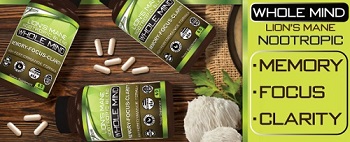Can Non-Maple Trees Be Tapped For Syrup? Yes!

Tapping trees for sap and making homemade syrup is an easy and delicious component of being a homesteader and raising one’s own food. The three issues that often stymy beginners, however, revolve around the trees themselves.
People new to tapping often struggle with being able to tell sugar maples from other maples, discerning which trees are maples as opposed to other deciduous trees, and wondering what to do even when they can differentiate between trees but do not have access to maples.
It’s Not Just Sugar Maples … And Not Just Maples!
So, what if there are no sugar maples? The good news: It might not matter. Trees vary greatly by region and even by individual trees. This means that the red maple in your yard might produce better quality sap with a higher sugar content than your neighbor’s sugar maple, in the same way that your yellow Labrador dog might outrun your neighbor’s greyhound.
The best way to know is to try it. When in doubt, tap it and taste the sap. I happen to have a big old sugar maple that gives sap with a bitter taste, and a red maple which is excellent for syruping. Pretty much any maple can be used for syrup. If the sap tastes good, try boiling it down. And if it turns out to be worth the effort, put a marker on the tree so that you can identify it for future use.
“The Big Book Of Off The Grid Secrets” — Every Homesteader Needs A Copy!
Even better news is that trees other than maples can be used to make delicious syrup. Birches, particularly yellow and gray species, make an excellent syrup, even though the sap has a lower sugar content and must be boiled down for longer than that of most maples. Many sources say walnut and hornbeam trees also make good choices for syrup.
As with any endeavor, remember to keep safe and avoid trying the sap of trees that contain any toxic components.
How to Tell the Difference
Telling the difference between trees, especially, during winter, is admittedly tricky at tapping time. The best way to know whether a maple tree is a sugar maple or a red maple or some other species of maple is often by the shape of their leaves or the color of their flowers. Unfortunately, when it’s time to tap for syrup, the leaves and flowers are long gone. It is possible that the leaves are on the ground under the tree, and it is even slightly possible that there is adequate distance between trees that it can be determined which tree the leaves fell from. But it is also likely that whatever leaves are present are buried under a foot or more of snow and ice. If you can tell by the leaves which kind of tree you have, using Internet photos or a field guide, do that.
Otherwise, try examining the bark. Mature red maples and silver maples tend to have a scalier texture than sugar maples, and do not have the light-colored splotches that sugar maples sometimes can.
The best way for small homestead syruping operations to ensure they are using sugar maples for spring tapping is to identify them ahead of time. The flowers and fruit — often called “spinners” or “wings” — are distinctive among maple species, as well as the leaves. Anyone considering tapping trees would do well to do their research in advance and mark the trees, using colored survey tape or marker flags, or even a hand-drawn map if there are enough trees.
Distinguishing Maples From Other Deciduous Trees
As with differentiating between species of maples, telling one genus of deciduous tree — often called hardwoods — from another can be challenging, as well, and for most of the same reasons. However, there is generally a more easily discernable difference between the bark textures and colors, sizes and basic growing habits between one tree genus and another.
Are You Prepared For A Long-Term Blackout? Get Backup Electricity Today!
Using the process of elimination can help. Paper birches are easy to discern by their bark. Other birch species and many ash trees hang onto their leaves long into the winter and sometimes even until the spring buds start pushing, so it is very likely that they would still have a leaf or two attached to the tree or on top of the snow beneath it. American beech trees often have a beech bark disease that makes their trunks covered with distinctive cankers.
Other trees sometimes have particular shapes or growing habits which make them discernable from sugar maples. For example, bear in mind that the branches of willows droop, and cherry trees are often twisted and gnarly. Red maples and silver maples are more likely to be found in swampy areas than are sugar maples.
While these points do not result in a definitive identification, they can at least narrow the pool of possibilities and thereby decrease time spent poring over field manuals and online guidebooks.
Tapping trees for sap need not be complicated. As with anything, it makes sense to start with the basics, continue to learn through a combination of trial and error and research with each season, and enjoy the tasty results.
Have you ever tapped a non-Maple tree? Share your tapping advice in the section below:
Harness The Power Of Nature’s Most Remarkable Healer: Vinegar
Source: http://www.offthegridnews.com/how-to-2/can-non-maple-trees-be-tapped-for-syrup-yes/
Anyone can join.
Anyone can contribute.
Anyone can become informed about their world.
"United We Stand" Click Here To Create Your Personal Citizen Journalist Account Today, Be Sure To Invite Your Friends.
Before It’s News® is a community of individuals who report on what’s going on around them, from all around the world. Anyone can join. Anyone can contribute. Anyone can become informed about their world. "United We Stand" Click Here To Create Your Personal Citizen Journalist Account Today, Be Sure To Invite Your Friends.
LION'S MANE PRODUCT
Try Our Lion’s Mane WHOLE MIND Nootropic Blend 60 Capsules
Mushrooms are having a moment. One fabulous fungus in particular, lion’s mane, may help improve memory, depression and anxiety symptoms. They are also an excellent source of nutrients that show promise as a therapy for dementia, and other neurodegenerative diseases. If you’re living with anxiety or depression, you may be curious about all the therapy options out there — including the natural ones.Our Lion’s Mane WHOLE MIND Nootropic Blend has been formulated to utilize the potency of Lion’s mane but also include the benefits of four other Highly Beneficial Mushrooms. Synergistically, they work together to Build your health through improving cognitive function and immunity regardless of your age. Our Nootropic not only improves your Cognitive Function and Activates your Immune System, but it benefits growth of Essential Gut Flora, further enhancing your Vitality.
Our Formula includes: Lion’s Mane Mushrooms which Increase Brain Power through nerve growth, lessen anxiety, reduce depression, and improve concentration. Its an excellent adaptogen, promotes sleep and improves immunity. Shiitake Mushrooms which Fight cancer cells and infectious disease, boost the immune system, promotes brain function, and serves as a source of B vitamins. Maitake Mushrooms which regulate blood sugar levels of diabetics, reduce hypertension and boosts the immune system. Reishi Mushrooms which Fight inflammation, liver disease, fatigue, tumor growth and cancer. They Improve skin disorders and soothes digestive problems, stomach ulcers and leaky gut syndrome. Chaga Mushrooms which have anti-aging effects, boost immune function, improve stamina and athletic performance, even act as a natural aphrodisiac, fighting diabetes and improving liver function. Try Our Lion’s Mane WHOLE MIND Nootropic Blend 60 Capsules Today. Be 100% Satisfied or Receive a Full Money Back Guarantee. Order Yours Today by Following This Link.






